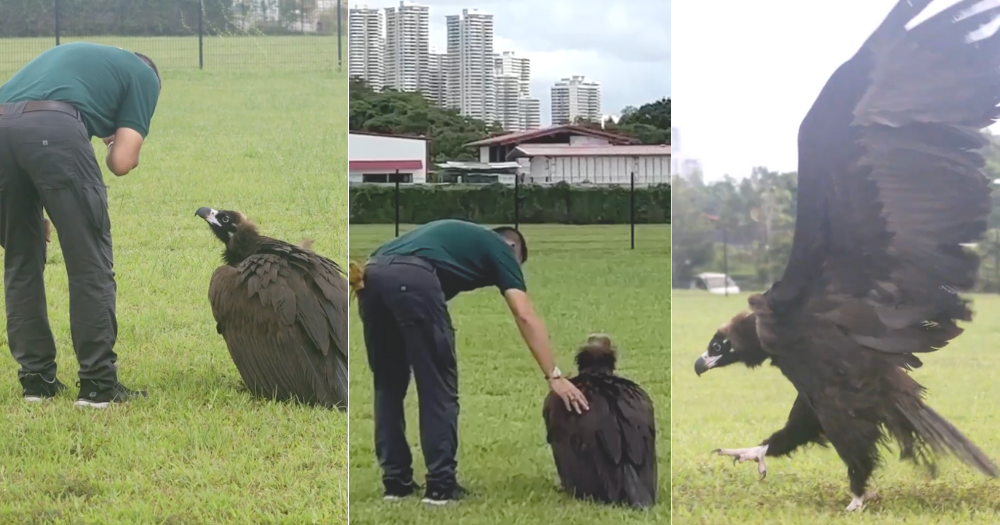Follow us on Telegram for the latest updates: https://t.me/mothershipsg
A likely vagrant Cinereous vulture that crash landed near Farrer Road struggled to take flight due to the cloud cover and weather conditions on Jan. 4.
It was the first attempt to release the bird of prey back to the wild after it was being rescued by National Parks Board (NParks) and checked by the veterinarians at the Jurong Bird Park (JBP).
First release attempt
On the morning of Jan. 4, National Parks Board (NParks) and Jurong Bird Park (JBP) personnel looked and egged the Cinereous vulture on to take flight, but to no avail.
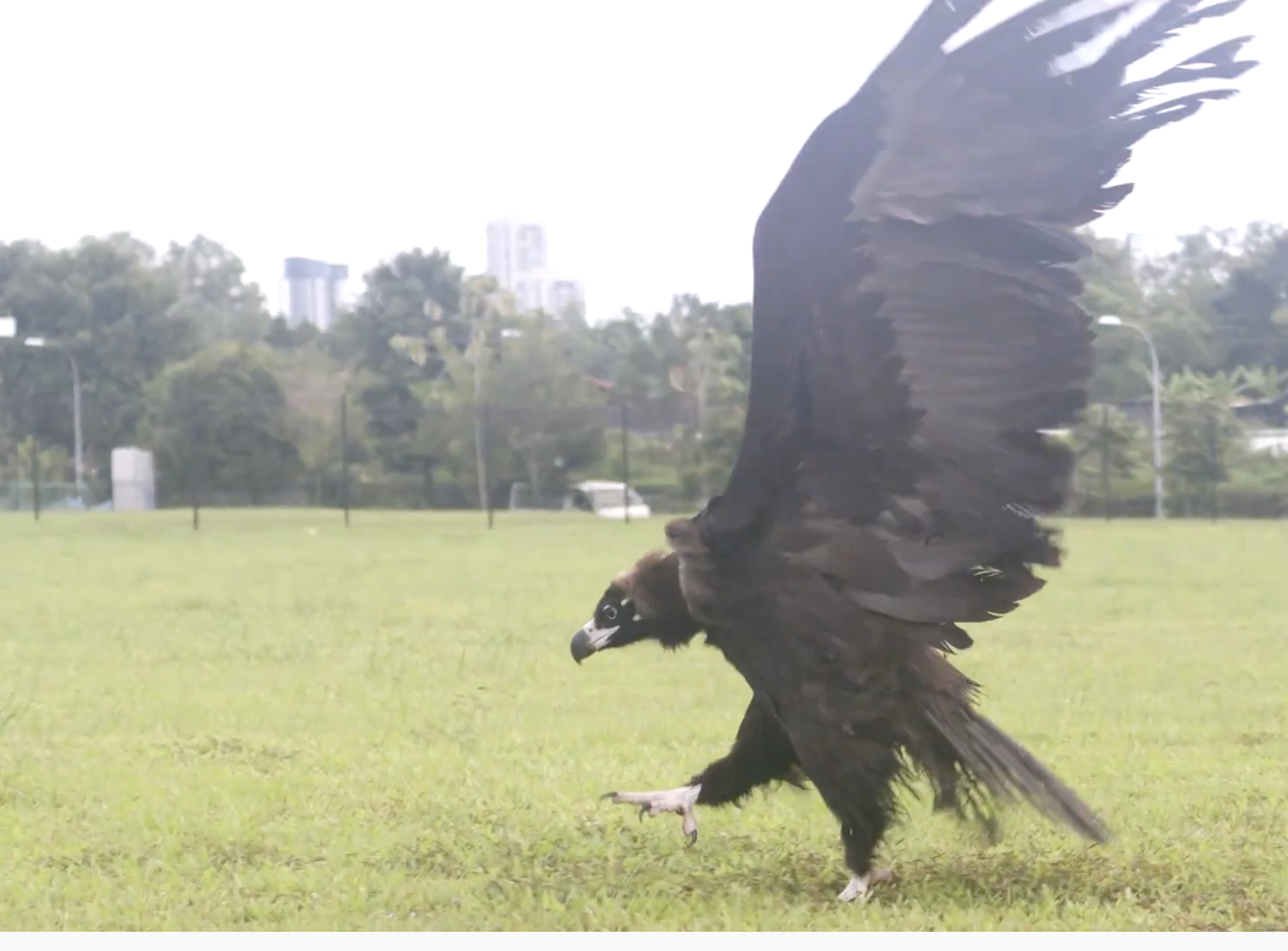 Screengrab of video courtesy of Mandai Wildlife Group.
Screengrab of video courtesy of Mandai Wildlife Group.
A veteran JBP keeper was sighted prompting the vulture to fly off from the grass patch.
The one-on-one pep talk lasted for about 30 seconds.
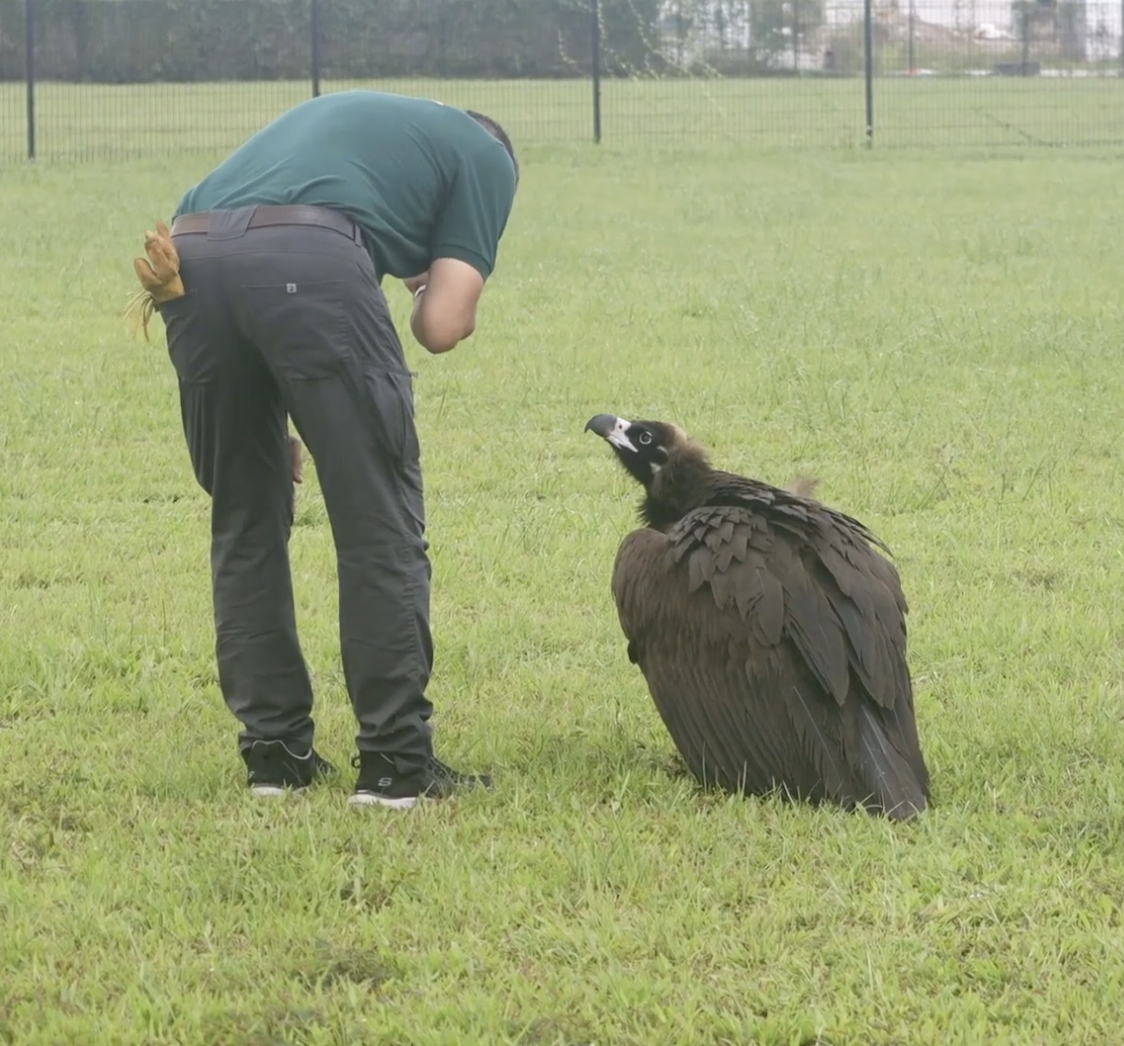 Screengrab of video courtesy of Mandai Wildlife Group.
Screengrab of video courtesy of Mandai Wildlife Group.
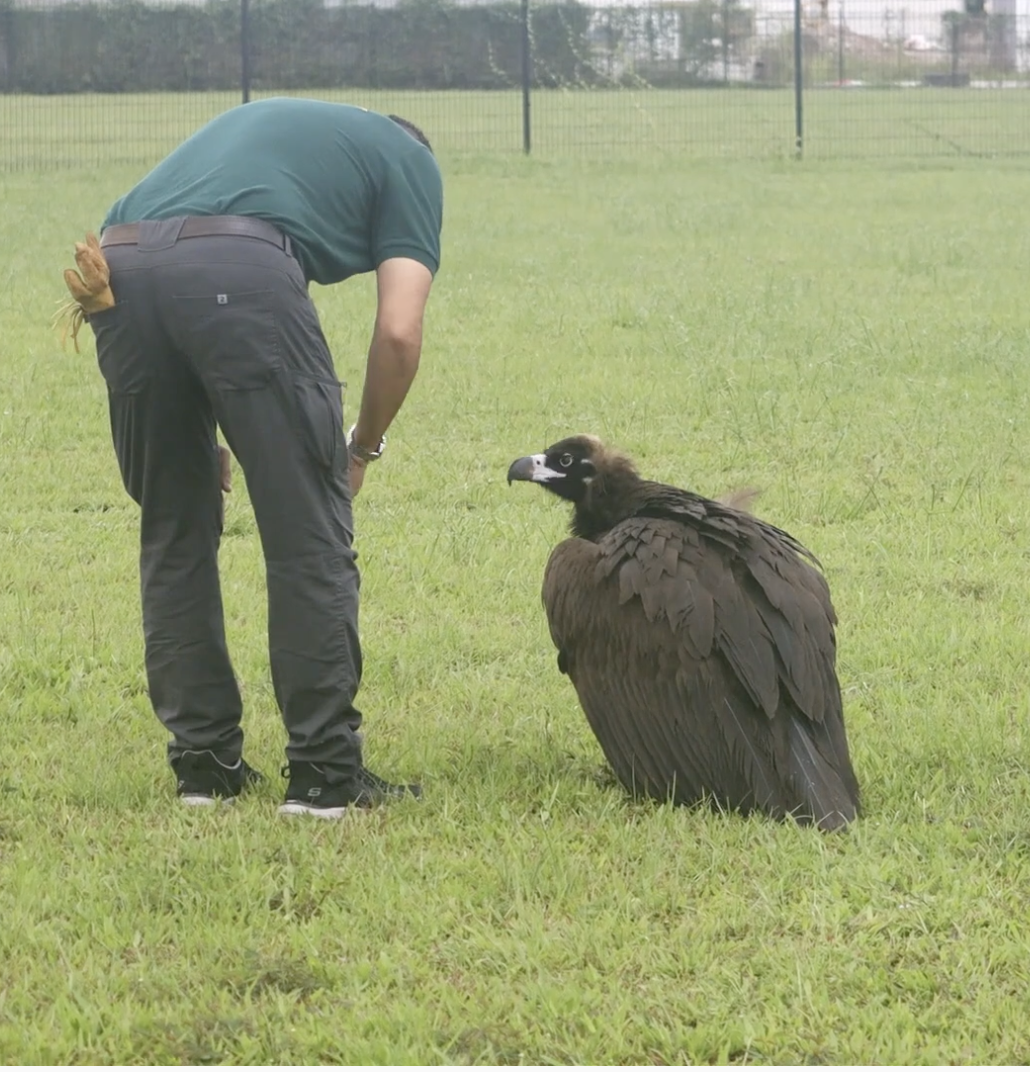 Screengrab of video courtesy of Mandai Wildlife Group.
Screengrab of video courtesy of Mandai Wildlife Group.
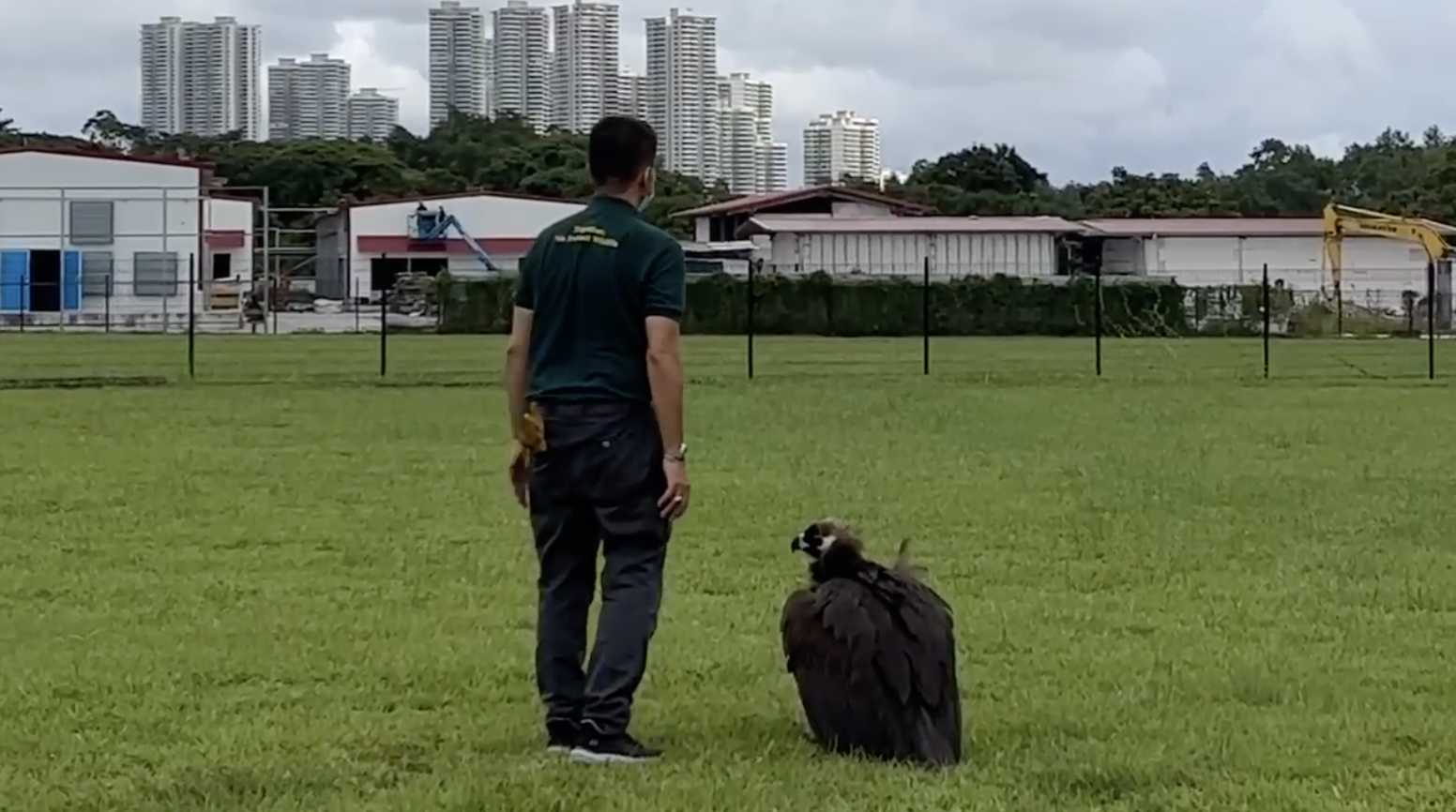 Screengrab from Straits Times' video.
Screengrab from Straits Times' video.
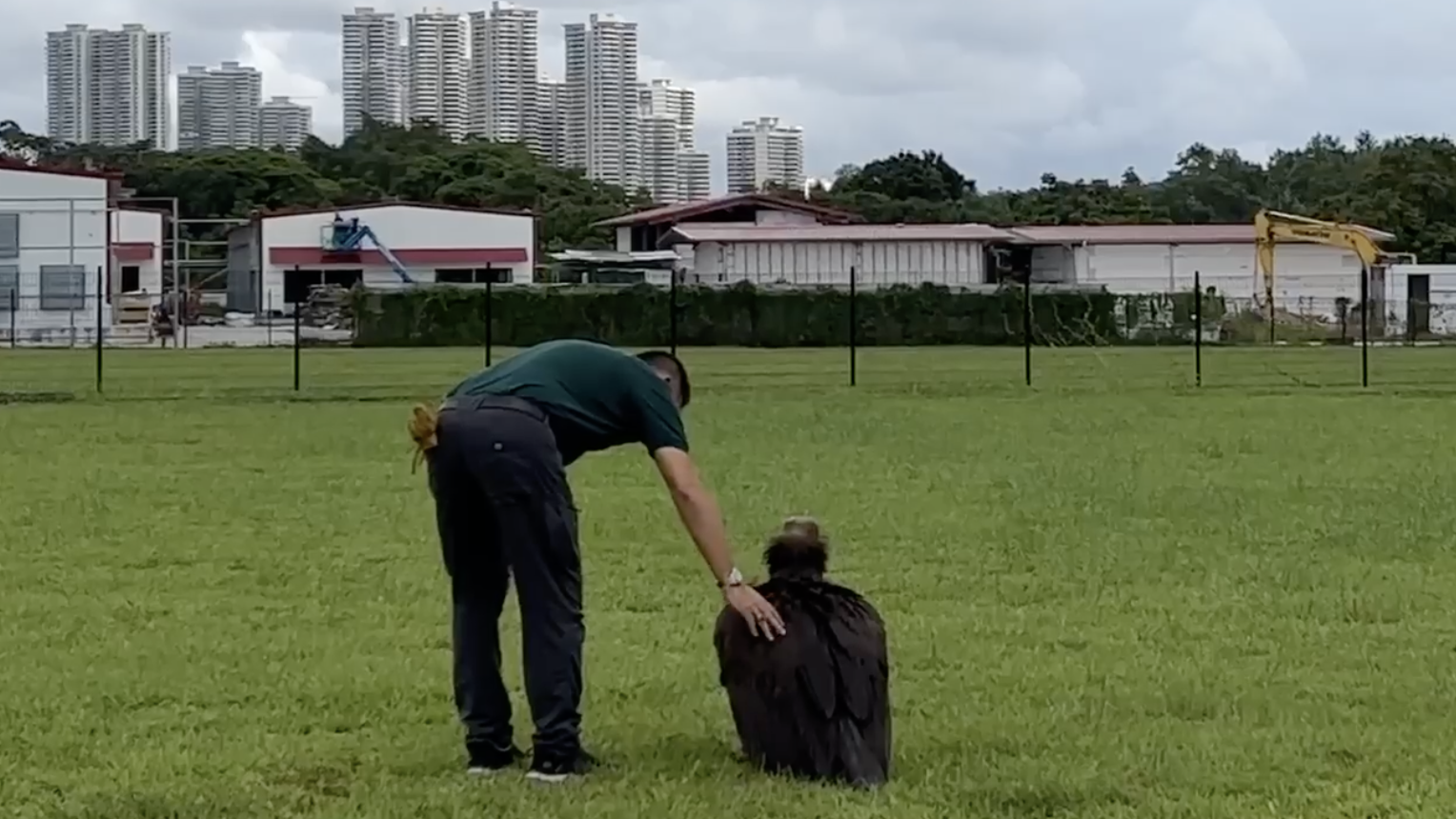 Screengrab from Straits Times' video.
Screengrab from Straits Times' video.
The staff members on site also resorted to giving the vulture a short chase to prompt it to fly.
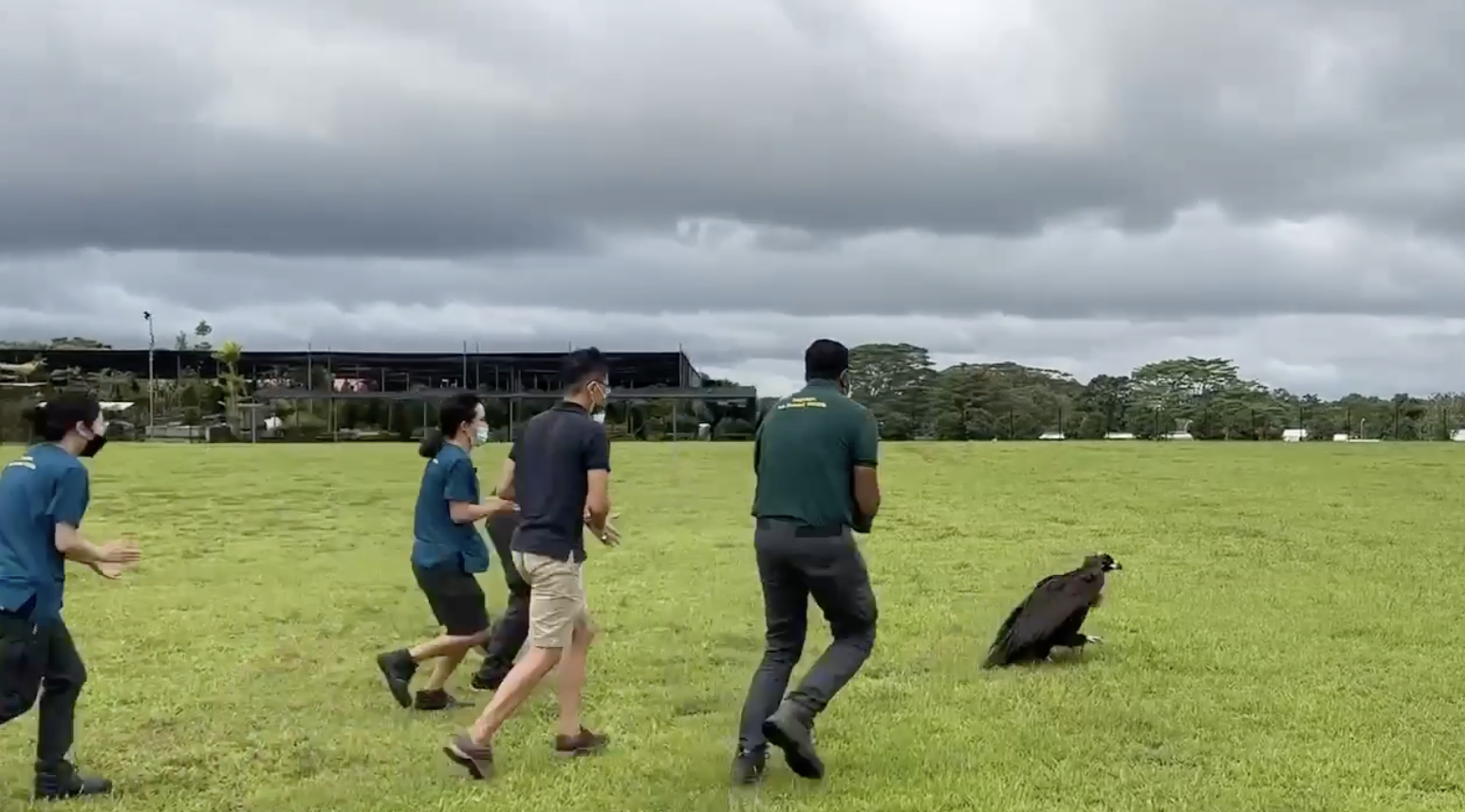 Screengrab from Straits Times' video.
Screengrab from Straits Times' video.
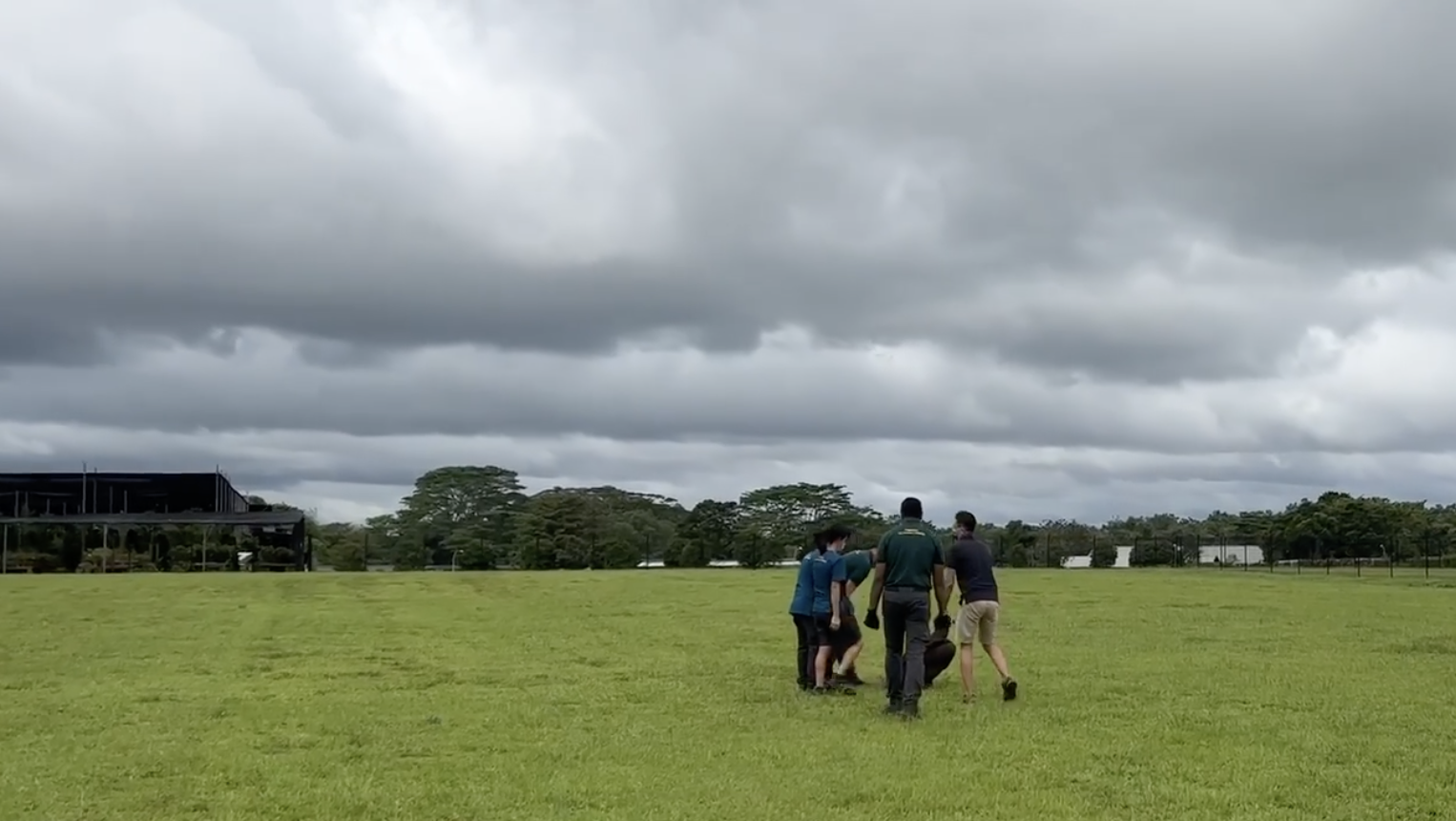 Screengrab from Straits Times' video.
Screengrab from Straits Times' video.
That did not succeed either.
The migratory bird was subsequently taken away for further recuperation after 30 minutes, despite a prior assessment which deemed the bird suitable for release.
Why the vulture did not fly off?
In response to Mothership, Mandai Wildlife Group's Deputy Vice President of Conservation, Research & Veterinary, Xie emphasised that existing weather condition is vital for a successful release, as larger birds rely on thermal uplifts for flight.
Thermal uplift is made possible with atmospheric convection when the less dense, hot air near the ground surfaces rises and dense, cold air gets displaced and sinks.
Thermal uplift is lessened when the weather is cool and cloudy.
The weather condition looked promising on Jan. 4 morning, Mandai Wildlife Group said, but it became less favourable by the time of release with heavy cloud cover.
What happened after the vulture was rescued?
In the statement to Mothership, Xie said that the Cinereous vulture was given a "complete physical examination" after NParks handed the bird over to JBP.
JBP's avian veterinarian team found "no abnormalities or injuries on the bird" after conducting full-body X-rays, a blood cell count, and organ function tests.
Xie told the Straits Times that the vulture was most likely exhausted from its long journey, and simply needed to refuel and recuperate.
Such occurrences are common for migratory birds.
When the Cinereous vulture crash landed around Farrer Road on Dec. 30, a birder named Martin told Mothership that the bird appeared to be extremely exhausted, and was barely moving.
Prior to that, the individual was initially sighted chilling with other Himalayan griffon vultures at Singapore Botanic Gardens.
ST reported that the vulture remained lying on its side in the bird hospital after being rescued by the authorities on Dec. 30.
After fluid therapy was administered, the vulture was able to stand well on its own by the next day.
It was fed boneless red meat, and subsequently red meat with bone, after the veterinarians found that its legs were strong enough to break down large pieces of bone.
According to ST, the bird was fed close to 600g of bone-in red meat daily.
Rescued migratory birds are released usually within a day
Instances of migratory birds requiring treatment for exhaustion or injuries are not unheard of in Singapore.
Xie told ST that the Jurong Bird Park hospital receives as many as 200 rescued birds – both native and migratory – each year.
Migratory birds will be released once they have been deemed healthy enough, and usually within a day, whenever possible.
However, there were instances when migratory birds remained under Mandai Wildlife Group's care, as they required long-term care and monitoring.
An example is a Himalayan griffon vulture named Genghis that was rescued from Nanyang Girls' High School in 2005.
What to do if you find an animal that requires assistance
Those who encounter an animal who is exhausted, injured, or requires assistance should contact NParks at 1800 471 7300 or the Animal Concerns Research and Education Society (Acres) 9783 7782.
Additionally, members of the public should refrain from approaching, feeding, or provoking these animals.
*Update:* It succeeded!
Related stories
Top image screenshot from video courtesy of Mandai Wildlife Group and via ST's video
If you like what you read, follow us on Facebook, Instagram, Twitter and Telegram to get the latest updates.
